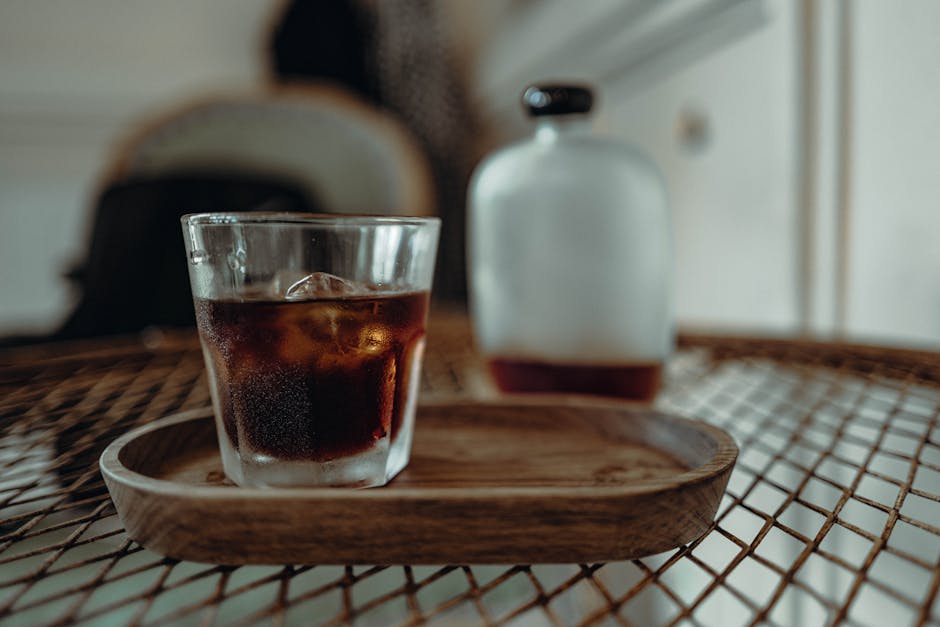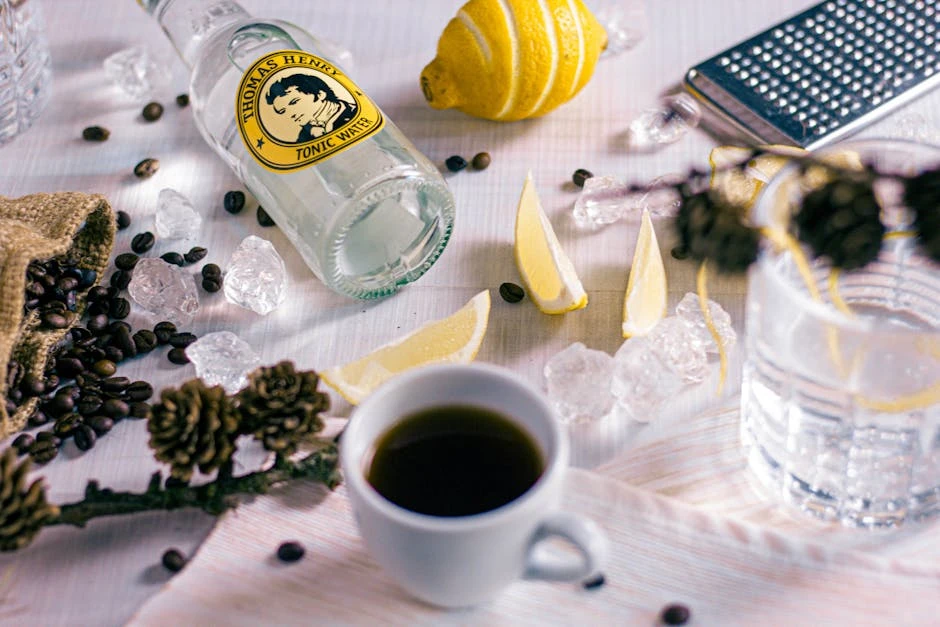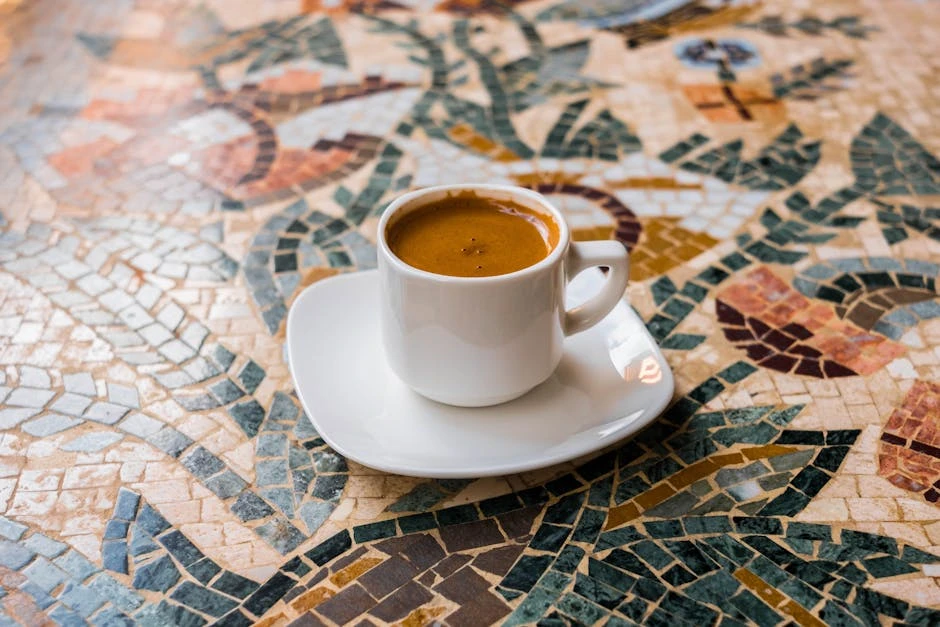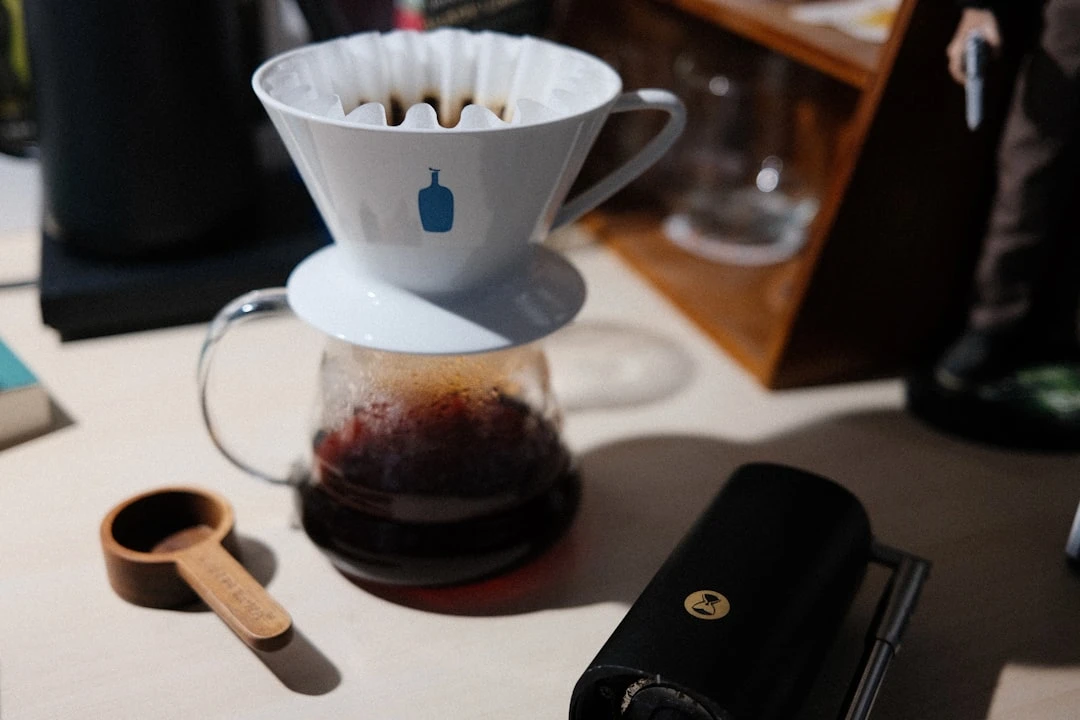Cold Brew vs Espresso: Which One is Right for You?

Here's a mind-blowing fact: the average coffee drinker consumes 3.1 cups per day, but most people have no clue about the fundamental differences between cold brew and espresso! I used to be one of those people, ordering whatever sounded fancy at the coffee shop without understanding what I was actually drinking.
The great cold brew vs espresso debate isn't just about hot versus cold – it's about two completely different philosophies of coffee making. One relies on time and patience, while the other demands precision and pressure. After years of experimenting with both methods (and making plenty of mistakes along the way), I've learned that choosing between cold brew and espresso can literally change your entire coffee experience.
Whether you're trying to decide which brewing method to master at home or just want to sound less clueless at your local café, understanding these two coffee giants will transform how you think about your daily cup!
What is Cold Brew Coffee?
Cold brew coffee is basically the tortoise in the coffee world – slow, steady, and surprisingly powerful. I remember the first time I tried making cold brew at home, thinking I could just throw some grounds in cold water and wait an hour. Boy, was I wrong!
Cold brew is made by steeping coarsely ground coffee beans in cold or room temperature water for an extended period, typically 12-24 hours. The long extraction time creates a completely different flavor profile than hot brewing methods. It's not just iced coffee – that's a common misconception that drove me crazy when I first started learning about coffee.
The process is almost ridiculously simple, which is part of its charm. You combine coffee grounds with water, let time do its magic, then strain out the grounds. What you're left with is a coffee concentrate that's smooth, less acidic, and surprisingly caffeinated. The low acidity was a game-changer for me since regular coffee sometimes gave me stomach issues.
One thing that surprised me about cold brew is how forgiving it is. Unlike espresso, where a few seconds can ruin your shot, cold brew is pretty hard to mess up completely. Sure, you can make it too weak or too strong, but you won't get that bitter, over-extracted taste that haunts so many coffee attempts.
What is Espresso Coffee?
Espresso is the Ferrari of the coffee world – fast, intense, and requiring serious skill to master. I'll never forget my first attempt at pulling an espresso shot on my friend's machine. It looked like muddy water and tasted even worse!
Espresso is made by forcing hot water through finely ground coffee beans under high pressure (about 9 bars) for roughly 25-30 seconds. This creates a concentrated shot of coffee with a rich crema on top and an intense flavor that can wake the dead. The entire process happens in under a minute, but getting it right takes practice.
The grind size, water temperature, pressure, and timing all have to be perfect. I spent months learning to dial in these variables, and I'm still tweaking things. One degree too hot or a few seconds too long, and your shot goes from heavenly to horrible. It's both frustrating and incredibly rewarding when you nail it.
What makes espresso special is that concentrated punch of flavor. A single shot is only about 1 ounce, but it packs more complexity and intensity than a full cup of regular coffee. It's also the foundation for practically every café drink you can think of – lattes, cappuccinos, macchiatos, you name it.
Brewing Methods Comparison
The brewing methods for cold brew and espresso couldn't be more different, and understanding these differences helped me appreciate why each produces such distinct results.
Cold brew is all about patience and simplicity. You're essentially doing a long, slow extraction using time instead of heat or pressure. I use a ratio of about 1:8 coffee to water, though some people prefer it stronger. The coarse grind is crucial – too fine and you'll end up with muddy, over-extracted coffee that's impossible to filter properly.
The beauty of cold brew is that once you start the process, you can basically ignore it. I usually set up a batch before bed and wake up to ready-to-drink coffee concentrate. No standing over the machine, no precise timing, no stress. Just patience.
Espresso, on the other hand, demands your full attention. Every variable matters – the grind needs to be fine but not too fine, the dose needs to be precise (usually 18-20 grams for a double shot), and the extraction time needs to hit that sweet spot of 25-30 seconds. I've probably thrown away hundreds of shots while learning to get this right.
The pressure element of espresso is what creates that magical crema and extracts flavors that you simply can't get with other methods. But it also means that small mistakes get amplified. A slightly off grind setting can turn your shot sour or bitter in seconds.
Taste Profile Differences
The taste difference between cold brew and espresso is like comparing jazz to rock music – both are incredible, but they're completely different experiences.
Cold brew has this smooth, almost velvety mouthfeel that I absolutely love. The low acidity makes it incredibly easy to drink, even black. When I first tried good cold brew, I was shocked at how naturally sweet it tasted without any added sugar. The long, cold extraction pulls out different compounds than hot brewing, resulting in less bitterness and acidity but more chocolate and nutty notes.
The flavor is more mellow and rounded, without those sharp edges you sometimes get with hot coffee. I find that cold brew tastes more like the coffee bean's natural flavors without the harshness that heat can introduce. It's coffee for people who want to actually taste coffee, if that makes sense.
Espresso is the complete opposite – it's bold, intense, and complex. A well-pulled shot should have multiple layers of flavor that change as you drink it. I've tasted shots that started sweet, turned nutty in the middle, and finished with dark chocolate notes. The crema adds a creamy texture that balances the intensity perfectly.
The concentrated nature of espresso means every flavor is amplified. This can be amazing when done right, but it also means any flaws in the beans or brewing process become glaringly obvious. There's nowhere to hide with espresso, which is both terrifying and exciting.
Caffeine Content Battle
This is where things get really interesting, and honestly, where a lot of coffee myths get busted. I used to think espresso was the ultimate caffeine bomb until I actually looked at the numbers.
A single shot of espresso contains about 63-68mg of caffeine. That sounds like a lot until you realize it's only about 1 ounce of liquid. Cold brew, depending on how it's prepared and diluted, can range from 100-200mg per 8-ounce serving. When I first calculated this, I realized I'd been completely wrong about which was stronger!
The tricky part with cold brew is that it's usually made as a concentrate and then diluted. If you're drinking it straight (which I don't recommend unless you want to vibrate through the ceiling), you could be getting 400mg or more of caffeine. That's like drinking 6 shots of espresso at once.
But here's where it gets more complex – the way caffeine hits you is different between the two. Espresso delivers its caffeine quickly and intensely, like a caffeine slap to the face. Cold brew, because you're typically drinking more volume over a longer period, gives you a more sustained energy boost.
I've found that espresso gives me that immediate alertness boost I need in the morning, while cold brew provides steady energy throughout the day without the crash. Your mileage may vary, but understanding these differences has helped me choose the right coffee for the right time.
Equipment and Cost Analysis
Let's talk money and gear, because this is where the rubber meets the road for most home coffee enthusiasts. I've spent way too much on coffee equipment over the years, so let me share what I've learned about the real costs.
For cold brew, you can literally start with a jar and a strainer. I made cold brew in mason jars for months before investing in a proper cold brew maker. A decent cold brew system will run you anywhere from $20 for a simple immersion brewer to $200+ for fancy filtration systems. The ongoing costs are just coffee beans and filters.
Espresso is a different beast entirely. A decent entry-level espresso machine starts around $200, but you'll quickly realize you need a proper grinder too, which is another $100-300 minimum. I started with a cheap machine and mediocre grinder, thinking I could upgrade later. Big mistake – I should have invested in the grinder first.
The real cost of espresso isn't just the initial equipment though. There's a learning curve that involves wasting a lot of coffee while you figure things out. I probably threw away a pound of beans in my first month just learning to dial in my shots. Plus, if you get serious about espresso, the equipment rabbit hole is bottomless. I know people who've spent thousands on their home setup.
Cold brew wins hands down on simplicity and low barrier to entry. Espresso wins on versatility and the ability to make café-style drinks at home, but it comes with a much steeper learning curve and higher costs.
Convenience and Preparation Time
This is where cold brew and espresso are practically opposites, and understanding this difference has helped me choose the right method for different situations in my life.
Cold brew is the ultimate "set it and forget it" coffee method. Once you've got your batch steeping, you're done for 12-24 hours. I usually make a big batch on Sunday that lasts me most of the week. The actual hands-on time is maybe 5 minutes – measuring, mixing, and straining. It's perfect for busy mornings when you want good coffee without any fuss.
The downside is planning ahead. You can't decide you want cold brew and have it ready in 30 minutes. I've been caught off guard plenty of times, desperately waiting for my cold brew to finish steeping while running late for work.
Espresso is the opposite – it's ready in under a minute once you know what you're doing, but it requires your full attention during that time. I love the ritual of grinding beans, dosing, tamping, and pulling a shot. It's like a mini meditation session that eases me into the day.
But espresso doesn't store well. A shot starts degrading immediately, and even pulling shots for drinks needs to happen quickly. You can't make a batch of espresso on Sunday and drink it all week like you can with cold brew. Each serving is a fresh commitment of time and attention.
Health Benefits and Considerations
The health aspects of cold brew vs espresso are more nuanced than most people realize, and honestly, this is an area where I wish I'd done more research earlier in my coffee journey.
Cold brew's lower acidity is a genuine advantage for people with sensitive stomachs or acid reflux. I used to get heartburn from regular coffee, but cold brew rarely bothers me. The smooth extraction process also seems to pull out fewer of the compounds that can cause digestive issues.
The antioxidant content in both is substantial, but they're different types of antioxidants due to the different extraction methods. Cold brew tends to have higher levels of certain compounds like chlorogenic acids, while espresso has others. Both are beneficial, just in different ways.
Temperature-wise, cold brew obviously doesn't risk burning your mouth or throat like hot espresso can. I've definitely scalded myself more than once being impatient with a fresh espresso shot. But some people find that hot beverages aid digestion better than cold ones.
The concentration factor is important too. Because espresso is so concentrated, you're getting a lot of coffee compounds in a small volume. This can be beneficial for antioxidants but also means any negative effects are concentrated too. Cold brew, being typically diluted, spreads those compounds out over more liquid.
One thing I've noticed personally is that the sustained caffeine release from cold brew seems to work better with my metabolism than the quick hit from espresso, but everyone's different. The key is paying attention to how your body responds to each.
Which One Should You Choose?
After years of experimenting with both, I've realized that choosing between cold brew and espresso isn't really about finding the "winner" – it's about understanding what works best for your lifestyle, taste preferences, and coffee goals.
Choose cold brew if you want convenience, lower acidity, smooth flavor, and don't mind planning ahead. It's perfect for hot weather, busy mornings, and people who want to drink coffee throughout the day without constantly brewing. I reach for cold brew when I want coffee to be simple and refreshing.
Choose espresso if you love intense flavors, want to make café-style drinks at home, enjoy the brewing ritual, and don't mind the learning curve. It's ideal for people who want maximum flavor impact in minimal volume and those who get excited about perfecting their technique. I make espresso when I want coffee to be an experience, not just a beverage.
Honestly, the best answer might be both. I keep cold brew concentrate in my fridge for easy weekday mornings and pull espresso shots on weekends when I have time to focus on the process. They serve different purposes in my coffee routine, and having both options gives me flexibility.
Consider your morning routine, your taste preferences, your budget, and how much time you want to invest in coffee preparation. There's no wrong choice here – just different paths to caffeinated happiness!
Conclusion
The cold brew vs espresso debate really comes down to understanding what you want from your coffee experience. Both methods can produce absolutely incredible coffee, but they require different approaches and deliver different rewards.
Cold brew offers simplicity, consistency, and smooth satisfaction with minimal effort once you've got the basics down. Espresso provides intensity, versatility, and the satisfaction of mastering a challenging skill, but demands more time, attention, and investment.
Remember that your coffee preferences might change over time too. I started as a cold brew devotee, got obsessed with espresso for a couple years, and now I genuinely appreciate both for different reasons. Don't feel like you have to pick a side and stick with it forever.
The most important thing is to experiment and find what works for your taste buds, your schedule, and your budget. Start with whichever method appeals to you more, master the basics, and then maybe explore the other one down the road.


